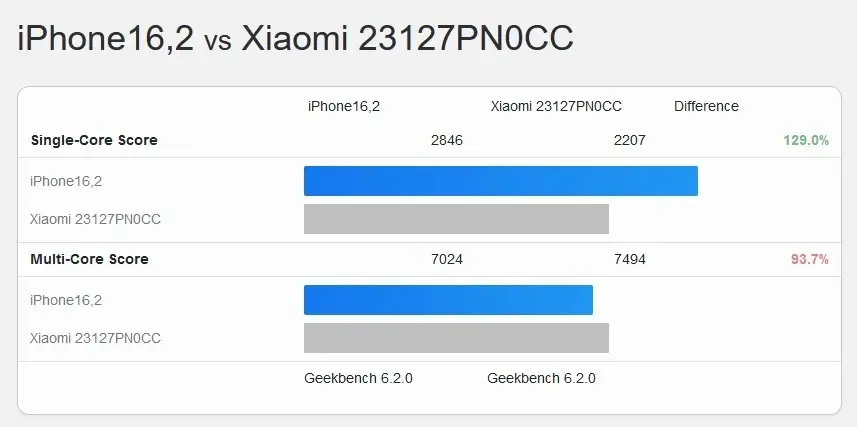Benchmark tests like Geekbench, AnTuTu, and 3DMark serve a crucial purpose in the world of smartphones. They provide manufacturers and phone enthusiasts with an objective measure of a device’s performance. These tests help assess intangible aspects that are difficult to measure. However, it’s important to note that some manufacturers have not followed the rules in the past. In 2013, Samsung faced criticism for manipulating benchmark results with the Galaxy Note 3, and the following year, HTC also faced similar allegations. While some may debate the significance of benchmark scores, they undeniably play a role in assessing and comparing smartphone performance.
When it comes to benchmark testing, two significant System-on-Chip (SoC) processors will certainly take the stage in the coming months. The 4nm Qualcomm Snapdragon 8 Gen 3 chipset and the 3nm Apple A17 Pro. These two powerhouses recently went head-to-head on Geekbench. The Qualcomm Snapdragon 8 Gen 3 will be the main driving force behind most flagship Android smartphones next year. This includes the Galaxy S24 Ultra, with Qualcomm’s official unveiling just around the corner. On the other hand, the Apple A17 Pro is currently the only 3nm smartphone chip in use. It fuels the performance of the iPhone 15 Pro and iPhone 15 Pro Max.
Benchmark Test Scores of the Snapdragon 8 Gen 3 and A17 Pro Chip
In this benchmark showdown, the Snapdragon 8 Gen 3 outperformed the Apple A17 Pro in the multi-core test. It achieved a score of 7494 compared to the A17 Pro’s 7288. However, the A17 Pro did excel in the single-core test, scoring 2846 as opposed to the Snapdragon 8 Gen 3’s 2207. It’s worth noting that the Snapdragon 8 Gen 3 was tested on the recently released Xiaomi 14 with 16GB of RAM. On the other hand, the iPhone 15 Pro Max is the device that produced the score for the A17 Pro. These results provide a glimpse into the performance capabilities of these two powerful processors.
CPU Configurations of the Snapdragon 8 Gen 3 and A17 Pro Chip
The robust performance of the Snapdragon 8 Gen 3 can be attributed to its well-balanced configuration. It includes one high-performing CPU core running at 3.30GHz, three additional performance CPU cores operating at 3.15GHz, two more performance CPU cores clocked at 2.96GHz, and two efficient CPU cores running at 2.27GHz. In contrast, the A17 Pro features a total of six CPU cores, consisting of two high-performance cores and four efficiency cores. The performance cores run at an impressive speed of 3.78GHz, while the efficiency cores operate at 2.11GHz. These distinct configurations contribute to the performance disparities observed in the benchmark tests.
Benchmark Test Conclusion 
In theory, it may come as a surprise that the Snapdragon 8 Gen 3 performed better than the A17 Pro, considering that TSMC manufactured the A17 Pro using its advanced N3B 3nm process node. In contrast, the Snapdragon 8 Gen 3 was built using TSMC’s 4nm process node. Typically, with the smaller transistors utilized in the 3nm process, the A17 Pro, with its impressive 19 billion transistors, should technically have a higher transistor count compared to the Snapdragon 8 Gen 3. This would generally make the A17 Pro more powerful and potentially more energy-efficient than its rival.
Indeed, when it comes to Geekbench scores, multiple variables come into play, one of which is the thermal performance of a device. It’s entirely plausible that various Android smartphones equipped with the Snapdragon 8 Gen 3 chipset could achieve varying scores, influenced by factors such as how effectively they manage heat dissipation. The ability of a device to maintain optimal performance under varying conditions, including heat management, can significantly impact benchmark results. Thus, while benchmark scores provide valuable insights, they are only one piece of the puzzle in assessing a device’s overall performance and capabilities. In real life usage, performance might be slightly different from what we saw in the test.






